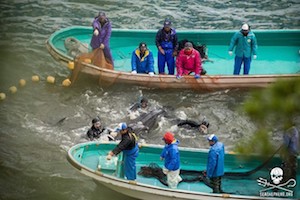Every year, when the dolphin hunters of Taiji are granted their hunting licence by the Japanese Prefecture of Wakayama, they are allotted certain quotas for how many of a given species they’ll be able to take that season… so many Risso’s dolphins, so many short-finned pilot whales, and so forth. (The ostensible reason for quotas is always one of maintaining a sustainable hunt, which is an offensive concept in itself when you’re talking about beings with the social & cognitive sophistication of dolphins. But leaving that wretched thought aside for now… )
Of those who will be successfully driven into the cove over the course of the six-month season, any given individual will fall into one of three categories: captured, killed or released. The big money is in the live captures, as these dolphins will be sold to aquaria to live out their lives providing entertainment to humans. Those killed will be used as food, usually for human, but sometimes for animal consumption. Then there is the ‘released’ category. Most of the releases will be species more highly prized by the captivity industry, presumably because the hunters have taken as many as they can handle, and eventually sell, in this particular hunt. So they’ll let the rest return to sea – possibly to be hunted again later on. This is why more bottlenose end up in the released category.
But there is another type of release that routinely takes place, and this one illustrates very well just how sinister these drive hunts really are. When the decision has been made to kill the remaining members of the pod, the hunters will routinely separate baby dolphins from their mothers, and ‘release’ them back into the sea. In this way, their smaller bodies won’t count against the quotas. They will often simply be thrown over the nets and left to fend for themselves. Other times, as has often been documented in video, they’ll be taken by skiff out into the open ocean and thrown overboard.
It is obvious to all that these babies are being left to die. They are completely helpless on their own. Without their mothers to provide food, protect them, and teach them critical life skills, their chances of survival are precisely zero.
Yet their deaths are not reported as such, and are not counted against the annual catch quotas. In addition to adding to the risk of decimating entire species, this practice is almost unimaginably vulgar, callous and cruel.
We can only end this tragedy by raising the social and legal pressure sufficiently to have the dolphin-hunting permits denied. One year that will happen, and the sooner we get there the better. And in the meantime, please continue to support the legal efforts of groups like Action for Dolphins, as well as the cove monitors from Ric O’Barry’s Dolphin Project, to ensure that the eyes of the world remain on this for as long as it takes.
For The Orca’s Voice,
Phil, Canadian Cetacean Alliance



Leave a Reply